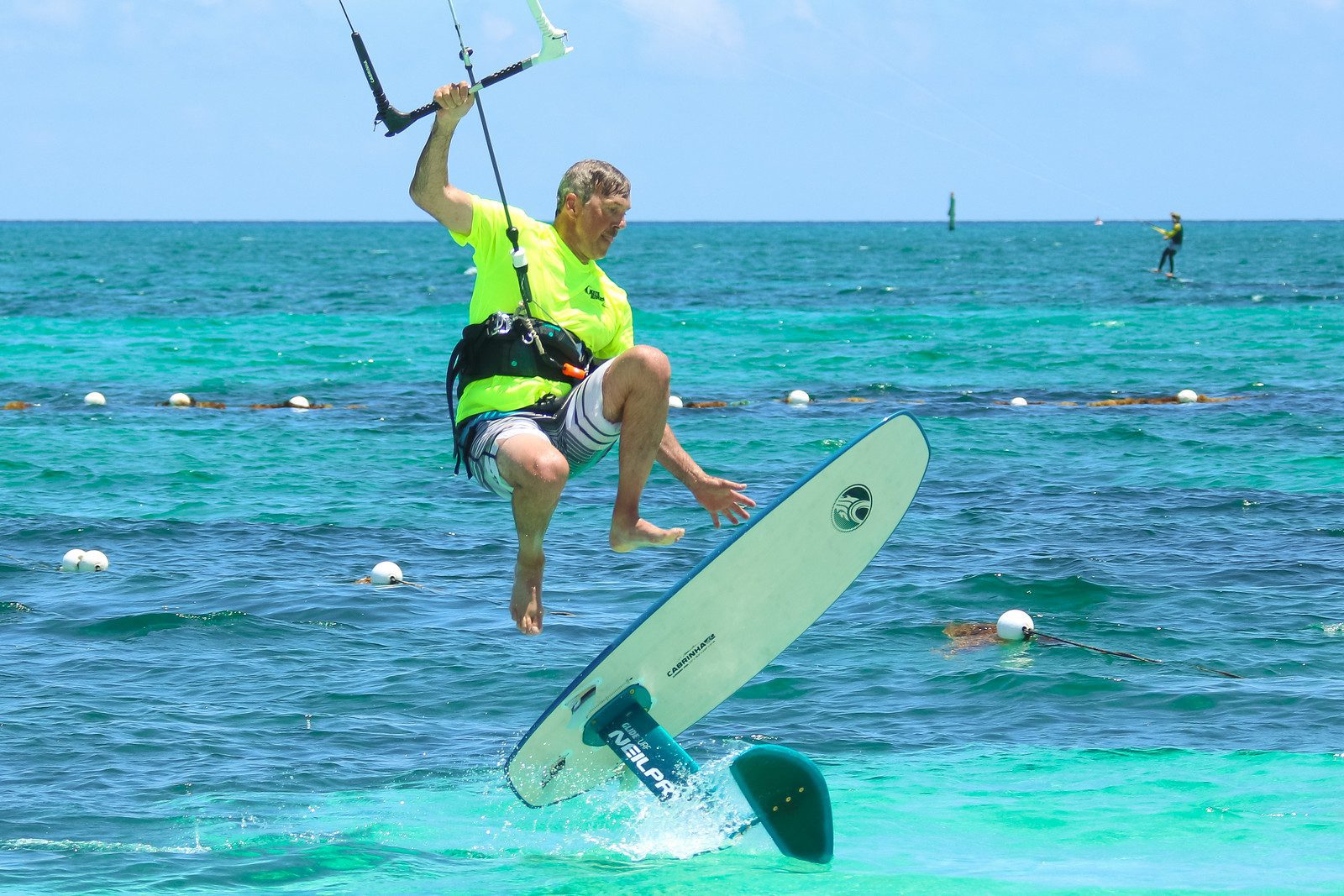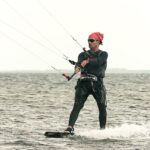
Kitesurfing to Foil Boarding: The Ultimate Guide
Are you a kitesurfer looking for the next big challenge? If so, look no further than foil boarding! This exciting new form of kitesurfing has taken the world by storm, and for a good reason. Not only is it an adrenaline-pumping thrill ride, but it also offers a unique and completely different experience from traditional kitesurfing.
In this article, we’ll cover everything you need to know about transitioning from kitesurfing to foil boarding, including the gear you’ll need, how to get started, and tips for mastering this exciting new sport.
What is Foil Boarding?
Foil boarding, also known as hydrofoil surfing, involves riding a specially designed board mounted on a hydrofoil, which lifts the board out of the water as you gain speed. This creates a unique sensation of floating above the water’s surface, almost like flying. Foil boards are typically smaller and narrower than traditional surfboards and are designed to be ridden with a kite or a windsurf sail.
Why Make the Switch?
There are many reasons to give foil boarding a try. For one, it’s an entirely new challenge pushing your skills to the limit. It’s also a different sensation from traditional kitesurfing, as you’ll fly above the water rather than skimming across it. Additionally, foil boards can be used in a broader range of conditions, making them a versatile addition to your quiver.
The Gear You’ll Need.
Before starting foil boarding, you’ll need to invest in specialized gear. Here’s what you’ll need:
Foil Board.
The most crucial piece of equipment you’ll need is, of course, a foil board. These come in various sizes and shapes, so choosing one appropriate for your skill level and the conditions you’ll be riding in is essential.
Foil.
The foil is the metal wing that attaches to the bottom of your board and lifts you out of the water. Foils come in various shapes and sizes and can be tailored to your riding style and ability.
Kite.
You’ll still need a kite to propel you along, and you’ll want to choose one appropriate for foil boarding. Generally, you’ll want a kite with a higher aspect ratio and less overall power than you would use for traditional kitesurfing.
Harness.
A harness is essential for keeping you connected to your kite, and you’ll want to choose one that’s comfortable and secure.
Safety Gear.
Finally, you’ll need the appropriate safety gear, including a helmet and impact vest. Riding with a buddy is also a good idea, as foil boarding can be more challenging and potentially dangerous than traditional kitesurfing.
Getting Started.
Once you’ve got all your gear, it’s time to start learning the basics of foil boarding. Here are some tips to get you started:
Start Slow.
Foil boarding is an entirely different sensation from traditional kitesurfing, so taking it slow and easing into it is essential. Start practicing on flat water with minimal wind, and gradually work up to more challenging conditions.
Focus on Balance.
Balancing on a foil board takes some getting used to, so focus on keeping your weight centered over the board. As you gain speed, you must shift your weight forward to support the foil from stalling.
Practice, Practice, Practice.
As with any new sport or skill, learning to foil board takes time and dedication. Don’t get discouraged if you don’t master it immediately, and don’t be afraid to ask for help or advice from more experienced foil borders.
One of the best ways to improve your foil boarding skills is to spend as much time on the water as possible. Start practicing in a calm, flat water with minimal wind, and gradually work up to more challenging conditions. The more time you spend on the water, the more comfortable you’ll become with the unique sensation of riding a foil board.
Focusing on your balance when first starting out is also a good idea. Balancing on a foil board takes some getting used to, so practice keeping your weight centered over the board. As you gain speed, you must shift your weight forward to support the foil from stalling.
Finally, experiment with different gear and techniques to find what works best for you. Foil boards and foils come in a wide range of shapes and sizes, and there’s no one “right” way to ride. Try different setups and techniques until you find the best for your riding style and ability.
With dedication and practice, you’ll soon be soaring above the water like a pro foil border!
Frequent questions.
What is foil boarding?
Foil boarding is a type of kiteboarding that involves riding a board with a hydrofoil attached to the bottom. This allows the rider to lift out of the water and glide above the surface.
Is foil boarding challenging to learn?
Foil boarding can be challenging to learn, but with practice and dedication, anyone can do it. It’s essential to start in calm, flat water and gradually work your way up to more challenging conditions.
Do I need special gear to foil board?
Yes, you’ll need a special foil board and foil-to-foil board. These can be expensive, but many kiteboarding shops offer rental options, so you can try them out before investing in your gear.
Can I foil the board in any conditions?
Foil boarding is best in moderate to strong winds and relatively flat water. Choppy or rough water can make it more challenging to maintain control.
Is foil boarding dangerous?
As with any water sport, there are risks involved in foil boarding. It’s essential to wear appropriate safety gear and only ride in conditions that are suitable for
Author
Latest entries
 WatersportsMay 10, 2023Qatar GKA Freestyle Kite World Cup, Fuwairit Kite Beach, Qatar: 31 January – 04 February – 2023
WatersportsMay 10, 2023Qatar GKA Freestyle Kite World Cup, Fuwairit Kite Beach, Qatar: 31 January – 04 February – 2023 WatersportsMarch 30, 2023Seven Navigation Tips That All Kite Surfers Should Know.
WatersportsMarch 30, 2023Seven Navigation Tips That All Kite Surfers Should Know. WatersportsMarch 30, 2023Why Safety First is the Most Important Aspect of Kitesurfing.
WatersportsMarch 30, 2023Why Safety First is the Most Important Aspect of Kitesurfing. WatersportsMarch 30, 2023Tips to Improve Your Body Drag Skills in Kitesurfing.
WatersportsMarch 30, 2023Tips to Improve Your Body Drag Skills in Kitesurfing.




